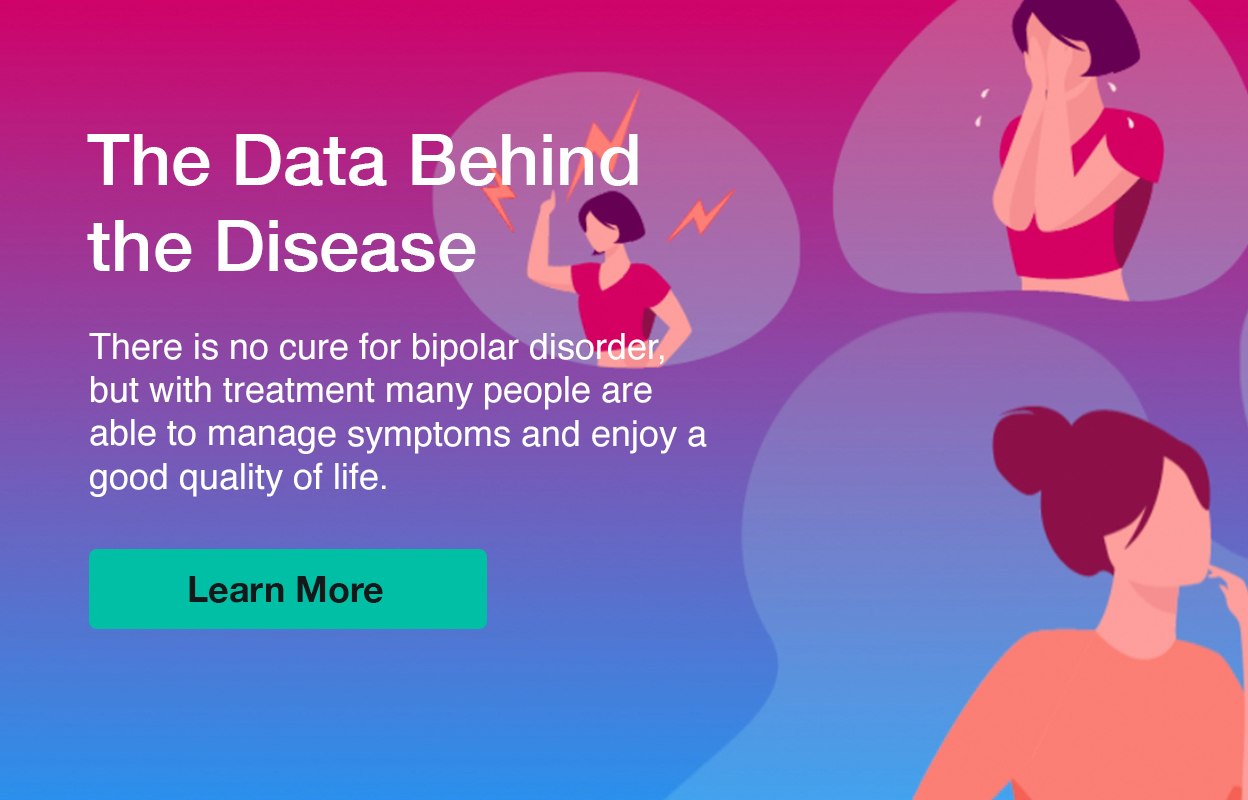Updated on October 22, 2024
Bipolar disorder takes a person's moods, thoughts, and behaviors through a cycle of intense highs and lows. These highs and lows are known as mania and depressive episodes, respectively. They sometimes come in cycles, sometimes all at once.
Episodes of mania are characterized by a big burst of energy, little need for sleep, and other elated feelings, but also irritability, impatience, and risky behavior.
Depressive episodes present with low moods, low energy, pessimism, and other negative emotions.
Many people with bipolar disorder also experience episodes of mixed features, which include a combination of manic and depressive symptoms.
Understanding the types of bipolar disorder
Bipolar disorder can be a very different experience for different people. One major factor that determines a person's experience with bipolar disorder is the type of bipolar disorder that they have. Different types of bipolar disorder are characterized by the symptoms, the pattern those symptoms follow, and the severity of the symptoms. Here are the different types of bipolar disorder:
Bipolar I disorder
People who’ve experienced at least one episode of mania may be diagnosed with bipolar I disorder. Some people may experience a complete loss of touch with reality (psychosis), which might include hallucinations and delusions, and hospitalization may be needed. Some people may also have a major depressive episode at some point in their life.
Bipolar II disorder
The lows of bipolar disorder II can dip just as low as they do with bipolar I disorder, but the highs are not as high. These more subtle highs are called hypomania. To be diagnosed with bipolar II disorder means a person has had episodes of both hypomania and depression. But, unlike bipolar disorder I, psychosis is not a feature of bipolar II disorder.
Cyclothymic disorder
This type is considered more mild, but it still has the potential to severely disrupt a person's life. It consists of more shallow lows than bipolar I or bipolar II. Instead, it's a persistent alternation of hypomania and low-grade depression (dysthymia) lasting at least two years.
Substance/medication-induced bipolar and related disorder
With this type, there is a major disturbance in mood, usually in the direction of hypomania, that appears to be provoked by alcohol, illicit drugs, or a medication that’s known for causing this kind of side effect.
Bipolar and related disorder due to another medical condition
Similar to the substance/medication-induced type, this type features intense levels of energy and activity, triggered by a separate medical condition.
Other specified bipolar and related disorder
If a person is diagnosed with this type, it means their symptoms are very typical for bipolar disorder, but for specific (“specified”) reasons, they don’t quite meet the criteria for one of the other types.
Unspecified bipolar and related disorder
Like the specified type above, a person with this type is experiencing bipolar symptoms, but doesn’t quite meet the criteria for another type—only the reasons why are not specified or not known.
Other types of bipolar disorder
There are other types that don't fit neatly into any established categories. For example, a person may experience recurring episodes of hypomania but no major depression or dysthymia. A person in this situation might be diagnosed with unspecified mood disorder.
Bipolar disorders affect men and women in equal numbers, but men may be diagnosed at a lower rate than women. The experience of clinical symptoms may be slightly different among the different sexes, but according to a 2019 study published in the journal CNS Spectrums, this is likely due not to sex, but to each person’s cultural context. There’s also no difference between sexes in the median age of diagnosis—for both men and women, it’s 25.
Difficult diagnosis
Altogether, nearly three percent of adults in the United States have some form of bipolar disorder. Many of those people are undiagnosed or misdiagnosed. In fact, people with bipolar disorder spend an average of nine years seeing multiple healthcare professionals before getting the proper diagnosis and treatment.
To diagnose someone with bipolar disorder, a healthcare provider (HCP) will do an evaluation that may have many parts and may take some time. It may include a physical exam, lab tests, and a psychiatric assessment. The evaluation may also include more participatory elements, like asking the persons’ friends and family about their loved one’s symptoms, and asking the person with symptoms to keep a daily log of their moods, sleep, and other factors like anxiety levels.
Finally, the HCP will compare all the person’s known symptoms with the criteria laid out in the Diagnostic and Statistical Manual of Mental Disorders (DSM-5 TR). This is a book published by the American Psychiatric Association to help HCPs make accurate diagnoses according to the current state of science.
Treatment
Getting an accurate diagnosis is the first and most essential step to treating bipolar disorder. Misdiagnosed, inappropriately treated, or untreated bipolar disorder can have serious consequences. Left untreated, symptoms tend to become more frequent and more severe.
A variety of treatments can help ease symptoms, with the front-line treatment being medications that can help balance moods. These include antipsychotics, mood stabilizers, anti-depressants, and anti-anxiety medications. Hospitalization or day treatment programs may also help when symptoms are severe.
Psychotherapy, especially when given alongside medications, can be very helpful. And treatment may also involve treating any substance abuse issues, since taking substances can make it hard to appropriately treat bipolar disorder.
For people who don’t respond to or can’t take medications, electroconvulsive therapy (ECT) can relieve symptoms in some people.
Bipolar disorder can make work, home life, and relationships difficult. In some cases, bipolar disorder can even lead to suicide. But when bipolar disorder is properly diagnosed and treated, people with the condition can lead active, productive lives.






